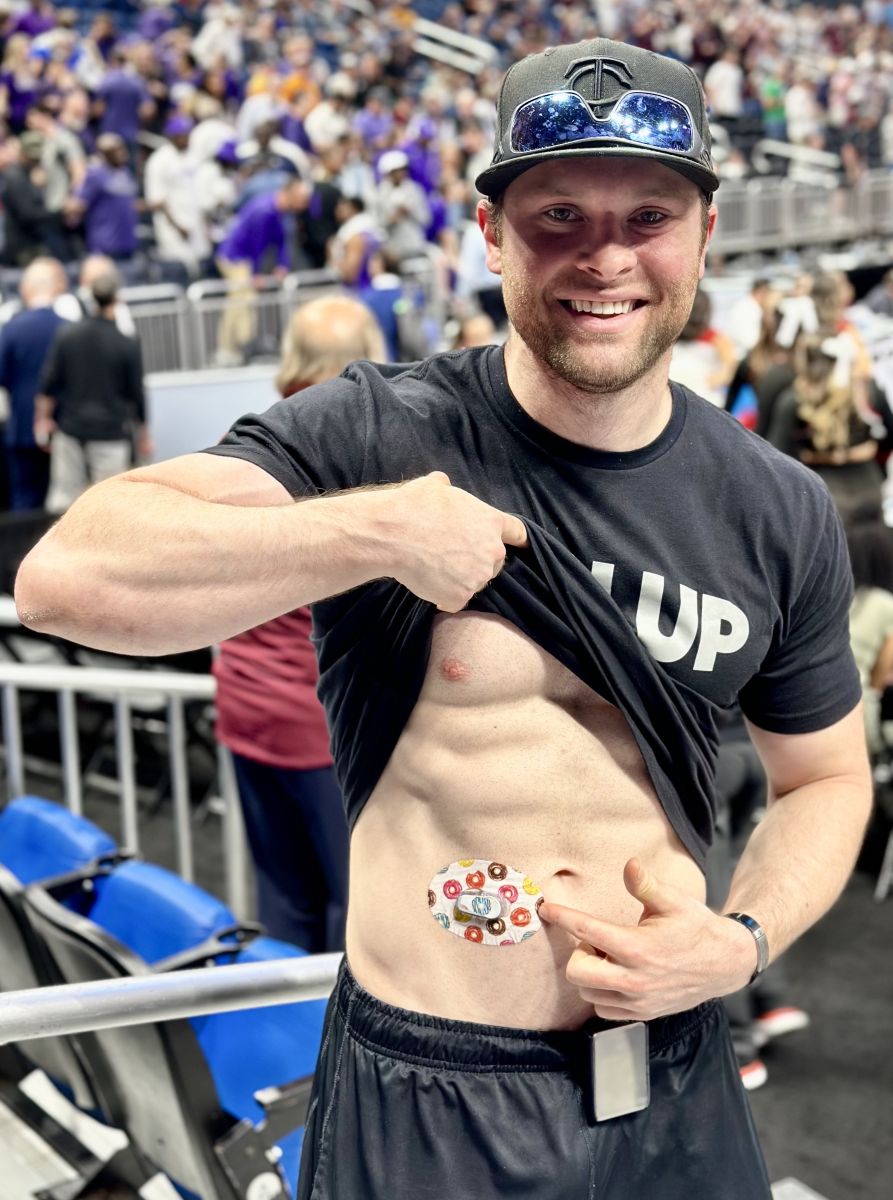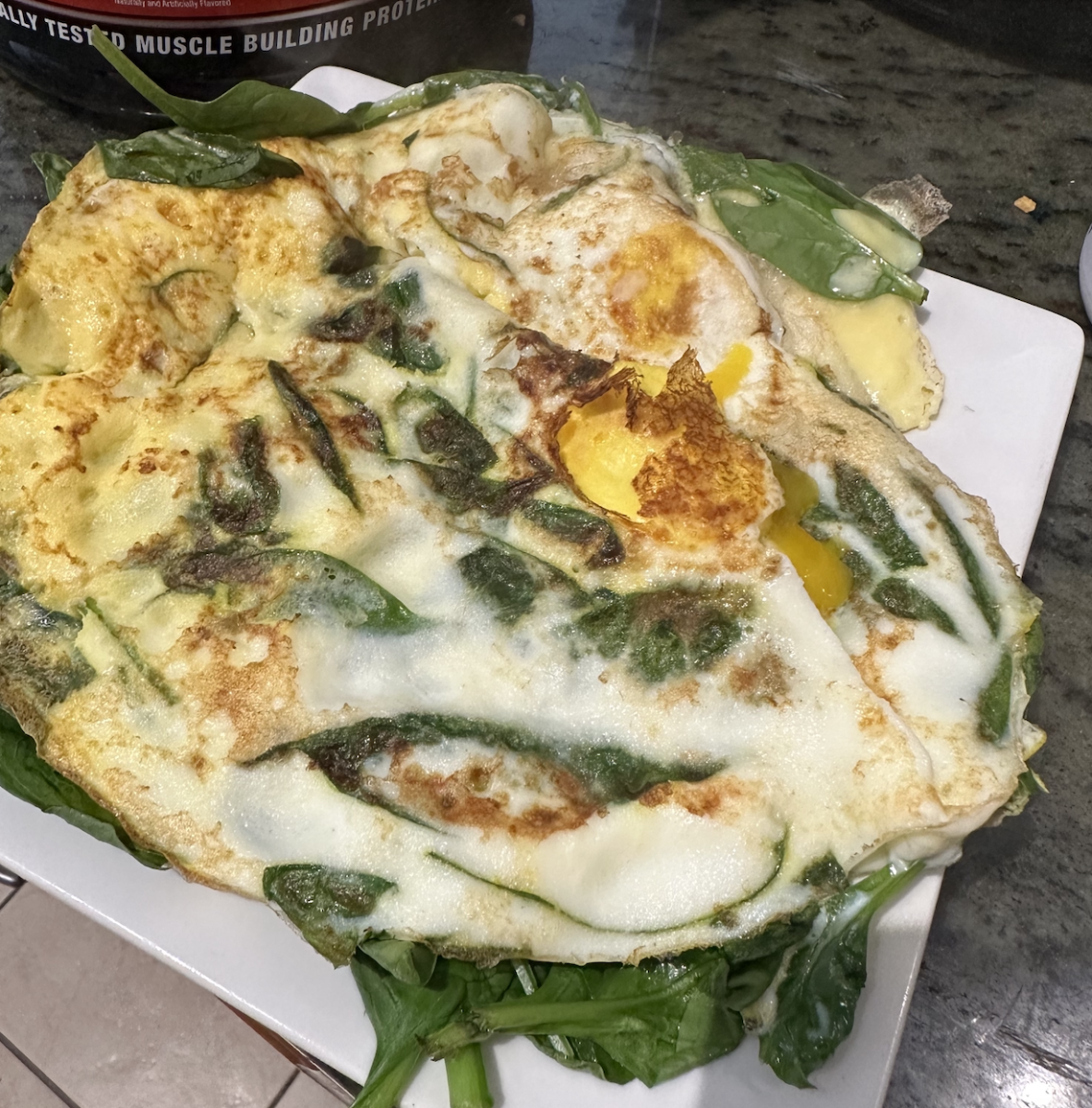What I Eat As a Diabetes Expert, Dietitian & Strength Coach with T1D
By Ben Tzeel

Ben Tzeel, a registered dietitian and strength coach who has lived with type 1 diabetes for over 20 years, discusses his daily eating habits and what others with diabetes should know.
If I had a dollar for every time someone with diabetes asked me, “Ben, what do you eat every day to keep your blood sugars in range?”…I could probably retire right about now.
As a registered dietitian, certified diabetes care and education specialist, and strength coach who has lived with diabetes for more than 20 years, I can understand why they would ask me this question.
And given my affinity for diving into the research and the time I spent doing diabetes-focused research in graduate school, I can say, I’ve tried nearly every diet permutation possible: high carb (over 300g of carbs per day), low carb (under 50g of carbs per day), intermittent fasting, carb backloading (leaving my carb consumption for the evening only), also. The list goes on.
I wanted to try each so I could get an idea of how I physically and mentally felt on each of these eating patterns, how my blood sugars would respond (thanks to a continuous glucose monitor, or CGM, and Dexcom’s 7-day overview reports), how my body performed during exercise, and whether or not I could stick to each one long term.
Ultimately, I was able to take elements from each experience and boiled down my journey into the way I eat now, which works for me and is optimal for my blood sugars.
Before I break it down, I just want to preface with the fact that I have patients who eat COMPLETELY differently than I do. The goal is to find the best way of eating for you and your goals, not to simply match what the dietitian and diabetes educator does.

11:30 a.m.: Post-workout breakfast/brunch
- 3 eggs
- 3 egg whites
- 3.5 cups spinach
- 3 ounces mushrooms
- Protein shake (peanut butter, almond milk, non-dairy protein powder; my favorite is Carnivor)
The first time I eat is after my workout. I typically work out around 9:30 a.m. for about 60-90 minutes. I personally choose to work out fasted, as it tends to work better for my blood sugar stability, especially on days where I am lifting weights. Because I have minimal insulin on board, it helps me to not stress about a blood sugar drop and allows for smaller tweaks to my basal and bolus insulin up until the first meal.
This eating schedule roughly follows 16:8 intermittent fasting guidelines. I personally have found it works better for me and my blood sugars to not eat until later on (although if I have a low, of course I’ll “break” the fast to treat it). Sometimes it’s closer to 15:9; I don’t get super specific down to the minute as it doesn’t tend to make a huge difference. I also like to consume fewer, sometimes larger, meals as opposed to many smaller meals, since it makes me feel more full. It makes me happy.
I focus heavily on the protein and the veggies. Breakfast is a meal where oftentimes veggies are skipped, which can lead to a lack of potassium in the diet. Given it’s after my sweat-heavy workout, I love that I have a burst of potassium in addition to the protein to help my body recover. (A person who has a deficit in potassium is not only more likely to experience cramping and lowered workout performance, but may also notice high blood sugars linger for longer.)
 I choose a non-dairy protein powder because, in both my personal and patient-facing experience, there seems to be a correlation between dairy-based protein powders and more drastic spikes in blood sugar. I use a brand called Carnivor that is beef-based (and is the richest tasting chocolate protein powder I’ve had to date).
I choose a non-dairy protein powder because, in both my personal and patient-facing experience, there seems to be a correlation between dairy-based protein powders and more drastic spikes in blood sugar. I use a brand called Carnivor that is beef-based (and is the richest tasting chocolate protein powder I’ve had to date).
I’m not super carb heavy in the morning, as I find I am more insulin resistant until the afternoon, so I don’t go overboard with my carb intake early in the day.
This breakfast takes a whole 10 minutes to make, so it is a great option for when I’m on the go.
3:30 p.m.: Snack/lunch
- Chicken snack wrap (high-fiber tortilla, 4 ounce Tru Grill grilled chicken strips from Costco, 1 ounce of part-skim cheese, 1 tablespoon of olive oil mayo)
- 6 stalks of celery
- 1.5 ounces of Lay’s BBQ chips
This is what I’ll have in my mid-afternoon break between groups of patients. What I love about this is that it takes all of 60 seconds to create the wrap, and I can be seated, have my snack, and move on with the day afterwards.
I strive for at least 35-45 grams of protein per sitting to achieve my protein goal each day and maximize muscle protein synthesis, the number one recovery mechanism in the body. My blood sugars also enjoy the steady flow of protein through the day, as protein is a stabilizer for blood sugars.
Fiber is a nutrient that doesn’t get a lot of shine, and the biggest focus in the diabetes world seems to be whether to count it or not towards total carbs for dosing purposes. Fiber has a ton of benefits, including improving the makeup of bacteria in the digestive system as well as keeping you feeling more full. My preferred tortillas from Ole Xtreme Wellness contain 11 grams of fiber, which is a nice boost towards the daily target of 30 grams that I set for myself. The celery contributes towards that target as well while providing a potassium boost (potassium is my favorite nutrient, if you couldn’t tell).
I also eat Lay’s BBQ chips because, well, life is too short to not consume the foods you enjoy, but more importantly, to show that I am not eating perfectly ‘clean,’ as some would expect. They surprisingly have a solid contribution of vitamin C and potassium as well, and as long as I measure them out and dose appropriately, their impact on my blood sugar is minimal, and they can assist in replenishing my glycogen stores (glucose stored in the liver) from my earlier workout.
 7:30 p.m.: Dinner
7:30 p.m.: Dinner
- 6 ounces chicken with honey mustard
- 8 ounces of cauliflower rice
- 1 medium potato, diced and mixed with light whipped butter
- 1 pint Enlightened ice cream
- 3 ounces strawberries
- 1.5 ounces walnuts, if I’m still hungry
I really, really like dinner. It’s my favorite meal of the day. I ensure that with dinner I’ve reached my personal calorie, protein, and other nutrient targets. I also like to end the day with something sweet, as that is my personal preference, but I make sure to choose smart options.
My fruit and vegetable target for the day is reached with a large bowl of cauliflower and some strawberries. I might steal some of my fiancée’s potatoes since she does a nice job with them, and they work great as a complex starch option.
Between the chicken and the ice cream – more on the ice cream in a moment!! – I definitely hit the protein target.
I like Enlightened ice cream because it has 20 grams of protein per pint, it contains fiber, it tastes fantastic, and honestly, it has a pretty low impact on my blood sugar because it is sweetened by allulose (a naturally occurring sugar and low-calorie sweetener with 90% fewer calories than sucrose), which has little to no impact on blood sugars. My go-to Enlightened flavor is Brownies & Cookie Dough light ice cream. SO GOOD.
Top takeaways
I emphasize protein, fiber, veggies and fruit, and getting sufficient fuel for my body at the right times of day. I do eat carbs, but not as many as some would expect. What I call my “sweet spot” – the carb range where I typically feel my best – tends to be between 130-180 grams of carbohydrates per day.
Of course, there’s no one perfect way for every person with diabetes to eat. It’s about finding what is best for you, your body, and your blood sugars, and rolling with it. Your sweet spot may be considerably higher or lower than mine, and that is okay! The goal is to find that sweet spot for your body where your Time in Range, energy levels, and workout performance are at their best, and to stay there – something our team of dietitians helps people with diabetes do all the time.
If people are intrigued by how a lower- or higher-carb way of eating would work for them, I typically advise people to move up their carb counts up or down slowly and check in with themselves each step of the way to see how those factors (blood glucose control, energy, and workout performance) are impacted.
And remember: It’s OK to indulge a little bit, as long as you control portions and focus on options with less sugar and more fiber and/or protein. While I do periodically have a real dessert (a favorite is bread pudding), I tend to stick to options like the high-protein Enlightened ice cream as my sweet treat, as it works within my blood sugars a lot better.








